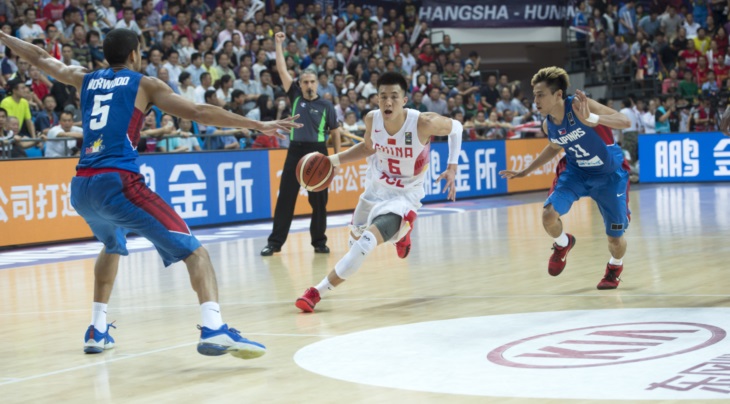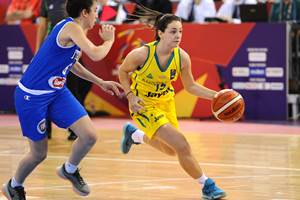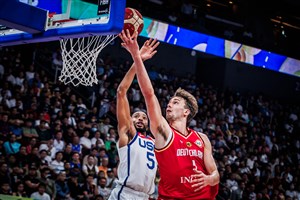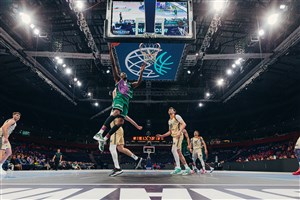
The new tournament format of the FIBA Asia Cup will shake things up big time
MANILA (Enzo Flojo's Asia on my Mind) - We already knew that the FIBA Asia Cup 2017 would be unlike any other, what with Australia and New Zealand joining and no FIBA Basketball World Cup or Olympic slot up for grabs. Recently, however, another big change is set to shake the FIBA Asia Cup big time, especially in terms of how the teams will approach each game and how the stakes have been raised significantly.
Watch out for the new format of the FIBA Asia Cup, folks! #AsianHoops #FIBAAsia2017
— Enzo Flojo (@hoopnut) March 28, 2017
In a nutshell, here is how the new tournament format will look like:
First off, the tournament will have two main phases - the Group Phase and the Final Phase. All sixteen (16) teams will participate in the Group Phase, where they are all divided into four groups of four teams each. This is similar to how it has been done in the past editions of the FIBA Asia Championship. We will see single round robin competition for each group, which means each team will be playing three games. After this, the 1st place team in each group will directly advance to the Quarter-Finals and will be assured of places among the top eight teams of the tournament. The 2nd place and 3rd place teams, however, will have to go through the first part of the Final Phase - the Qualifications to Quarter-Finals.
This is where things get tricky and stakes are raised in a big way. Remember that in the past four editions of this competition, each group's 2nd place and 3rd place teams all advance to the second round where they join and play the top three teams of another group. The top four teams of this second round group then move on to the Quarter-Finals. In the new format for 2017, 2nd and 3rd place teams will have less room for error after the Group Phase because all it takes is just one loss for them to crash out of contention for the Quarter-Finals. In effect, the games in the Qualifications to Quarter-Finals are win-or-go-home affairs.
Let's use the group phase results of the 2015 edition to simulate what can happen. Two years ago, Iran, Palestine, China and Qatar all finished as 1st place teams of their respective groups. Using the new format, all four of those teams would be seeded into the Quarter-Finals. In the meantime, we would have the following match ups in the Qualifications to Quarter-Finals: Japan vs Hong Kong, Philippines vs India, Korea vs Kazakhstan and Lebanon vs Jordan. The winners of these four games would then join the 1st place teams in the Quarter-Finals.
As can be expected, once the tournament reaches the Quarter-Finals, every game will then be a knockout affair. The four Quarter-Finals victors will move to the Semi-Finals, where the winners will dispute the tournament crown and the losers will play for 3rd place.
Did you get all that? The format is actually simpler and more straightforward than previous ones, and because a team can be sent packing with just one loss after the Group Phase, every game carries a lot more weight and, of course, a lot more drama.
As exciting as the FIBA Asia Cup 2017 already is, this new format makes me even more pumped. What I love about this is that - and I cannot stress this enough - the stakes are much higher now. The phrase "every game counts" rings truer now than ever before. If a team finishes at 4th place in the Group Phase, they're out of title contention, and if a highly touted team gets upset in the Group Phase, the consequences are much more dire. Remember when Palestine pulled the rug from under the Philippines two years ago? A loss like that will have much more serious ramifications in this new format. Remember Qatar's two overtime wins over Kazakhstan and Lebanon? Under the new format, those triumphs would not only give Al Annabi the top spot in the group but, more importantly, a berth in the Quarter-Finals. Group Phase games have never been more important than they are now.
This also levels the playing field somewhat, because it increases the risk-reward dynamics in every contest. A non-traditional powerhouse (perhaps like Hong Kong or Iraq) will have much more incentive to go all out in every game because an upset win over a contender (perhaps like Lebanon or Korea) will not just result in a notch on the contender's loss column but will actually send shockwaves throughout the rest of the field. Conversely, a powerhouse team (perhaps like Iran or China) can ill afford to take any opponent too lightly lest they finish on the short end of an unlikely result.Sure, this puts a lot more pressure on the coaches and players to give their A-game in every match, but isn't that what the fans want anyway? Due to this new format, Asian hoop nuts can be assured that they're in for a lot more intensity and excitement in the games of the FIBA Asia Cup 2017, and that means this is one change we should all welcome with open arms.
Enzo Flojo
FIBA
FIBA's columnists write on a wide range of topics relating to basketball that are of interest to them. The opinions they express are their own and in no way reflect those of FIBA.
FIBA takes no responsibility and gives no guarantees, warranties or representations, implied or otherwise, for the content or accuracy of the content and opinion expressed in the above article.

















